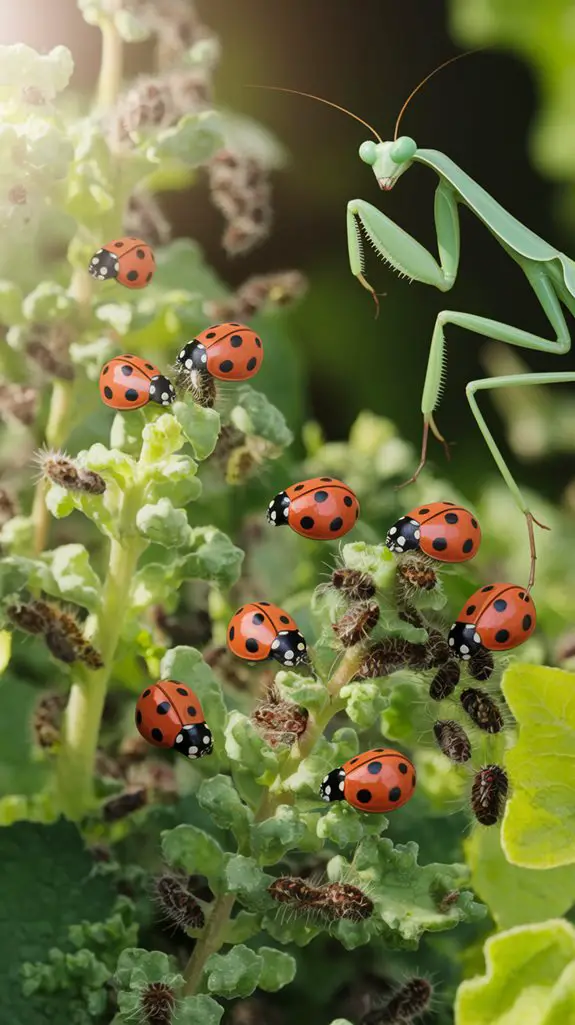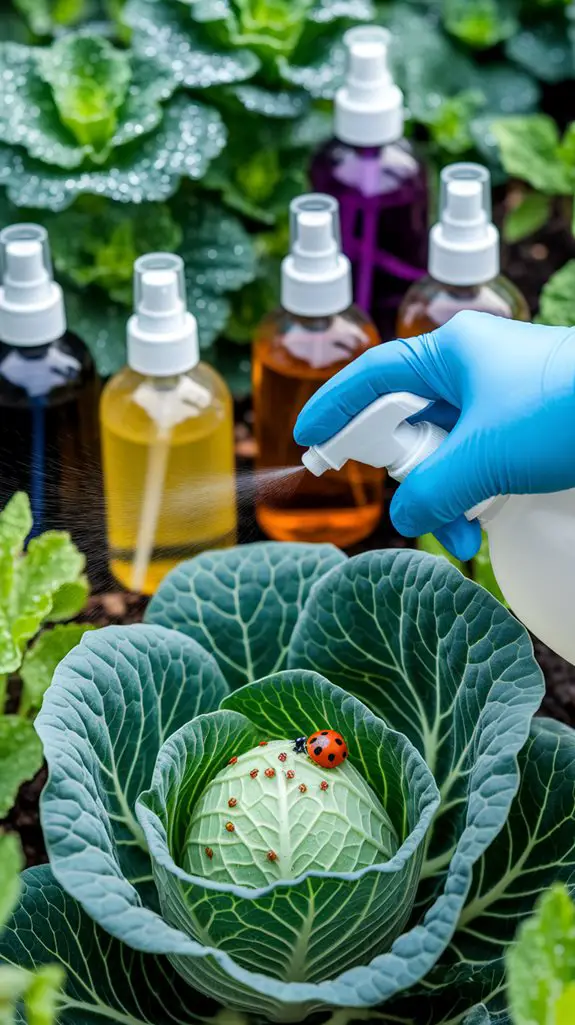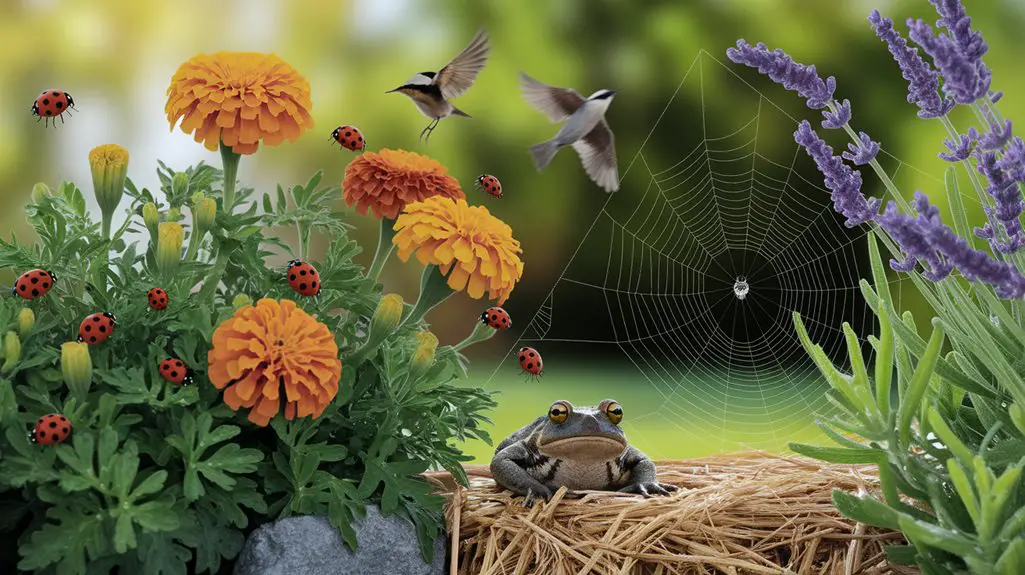When you’re battling garden pests, harsh chemicals aren’t your only option. You can protect your vegetables and flowers using nature’s own defense systems. From strategic companion planting to recruiting beneficial insects, these five natural pest control strategies work with your garden’s ecosystem rather than against it. They’ll help you maintain balance while keeping destructive bugs at bay. The best part? These methods won’t harm the environment or compromise the health of your produce.
Companion Planting: Nature’s Defense System
While many gardeners rush to chemical solutions at the first sign of pests, companion planting offers a natural and effective alternative. This strategy leverages the natural relationships between plants to deter harmful insects and attract beneficial ones.
You’ll find that marigolds repel nematodes when planted near tomatoes, while basil deters mosquitoes and flies. Plant nasturtiums as sacrificial crops to draw aphids away from your vegetables. Aromatic herbs like rosemary and thyme confuse pests with their strong scents, protecting neighboring plants.
The classic “Three Sisters” method—corn, beans, and squash planted together—demonstrates companion planting’s efficiency. The corn provides support, beans fix nitrogen, and squash leaves shade the soil, reducing weeds and pests. Additionally, using natural pest control strategies like companion planting can significantly enhance your garden’s resilience against infestations.
Beneficial Insects: Recruiting Garden Allies

Although chemical pesticides may seem like a quick fix, your garden’s most effective defenders are often already buzzing, crawling, and fluttering nearby.
Ladybugs, lacewings, and praying mantises enthusiastically devour aphids and soft-bodied pests, while parasitic wasps target caterpillars and beetles.
You’ll attract these allies by creating diverse habitats with shallow water sources, insectary plants, and undisturbed areas for overwintering.
Flowers like sweet alyssum, dill, and cosmos provide essential nectar and pollen for adult beneficials. Additionally, creating a habitat rich in native plants can significantly boost the population of these helpful insects.
Remember that timing matters—release purchased insects at dusk when they’re less likely to fly away.
Don’t expect immediate results; establishing a balanced ecosystem takes patience.
DIY Organic Sprays and Solutions

When beneficial insects need a helping hand, simple homemade remedies can provide effective reinforcement against persistent garden pests.
Mix one tablespoon of dish soap with a quart of water to create a spray that suffocates soft-bodied insects like aphids and mites. For fungal issues, combine one tablespoon of baking soda with a gallon of water and a few drops of vegetable oil.
Garlic-pepper spray offers powerful protection against multiple pests—blend six garlic cloves and one hot pepper with a quart of water, strain, and spray liberally.
Neem oil diluted at 2 teaspoons per quart of water disrupts insect life cycles without harming pollinators when applied in the evening. Effective DIY traps can also complement these sprays by targeting specific pests more directly.
Store your homemade solutions in labeled containers and test on small plant sections before widespread application.
Physical Barriers and Traps for Pest Management
Beyond chemical deterrents, physical barriers offer gardeners reliable, non-toxic protection against persistent pests.
Row covers, made from lightweight fabric, shield vulnerable seedlings while still allowing sunlight and water penetration. For larger plants, copper tape creates an effective boundary against slugs and snails, as these pests avoid crossing metallic surfaces.
Strategic trapping also plays a vital role in integrated pest management. Yellow sticky cards attract and capture aphids, whiteflies, and fungus gnats through their visual attraction to the color.
Beer traps, simply shallow containers filled with beer, lure slugs to their demise overnight. For larger pests like rabbits or deer, installing proper fencing—buried several inches underground for burrowers—provides long-term protection without requiring constant maintenance or chemical applications. Additionally, incorporating natural repellents such as garlic or peppermint oil can enhance the effectiveness of these physical measures.
Soil Health: The Foundation of Pest Resistance
While many gardeners focus on treating visible pest problems, the true foundation of pest resistance begins beneath the surface with soil health. Nutrient-rich, biologically active soil creates robust plants that naturally resist insect damage and disease.
You’ll want to incorporate organic matter like compost, which feeds beneficial microorganisms that break down nutrients plants can easily absorb. Regular soil testing helps you maintain ideal pH levels—most vegetables prefer 6.0-7.0.
Consider adding mycorrhizal fungi to your soil, as they form symbiotic relationships with plant roots, enhancing nutrient uptake and disease resistance.
Cover cropping during off-seasons prevents erosion while adding organic material. Avoid compaction by using designated paths and minimizing tilling, which preserves soil structure and beneficial organisms.
Additionally, planting natural allies such as marigolds and basil can help repel unwanted pests while promoting a balanced ecosystem.
Remember: healthy soil creates resilient plants that require fewer interventions against pests.
Conclusion
You’ve now armed yourself with nature’s arsenal against those miniature terrorists plotting against your prized tomatoes. Isn’t it amusing that while you’ve been stockpiling chemical warfare, Mother Nature’s been quietly perfecting pest control for millions of years? Your garden doesn’t need to be a toxic wasteland. Embrace these strategies, and you’ll create a thriving ecosystem where pests check in but don’t check out.




